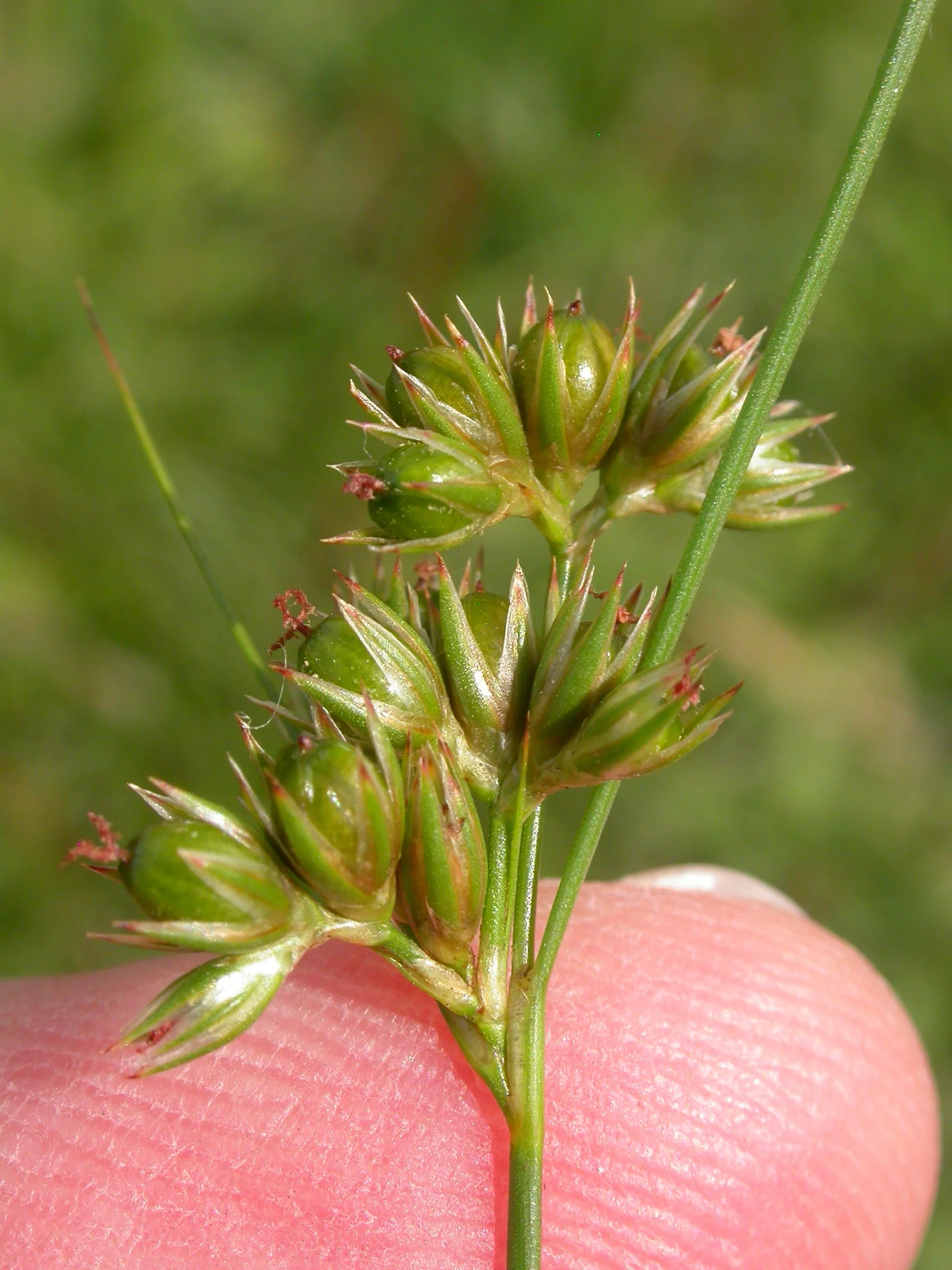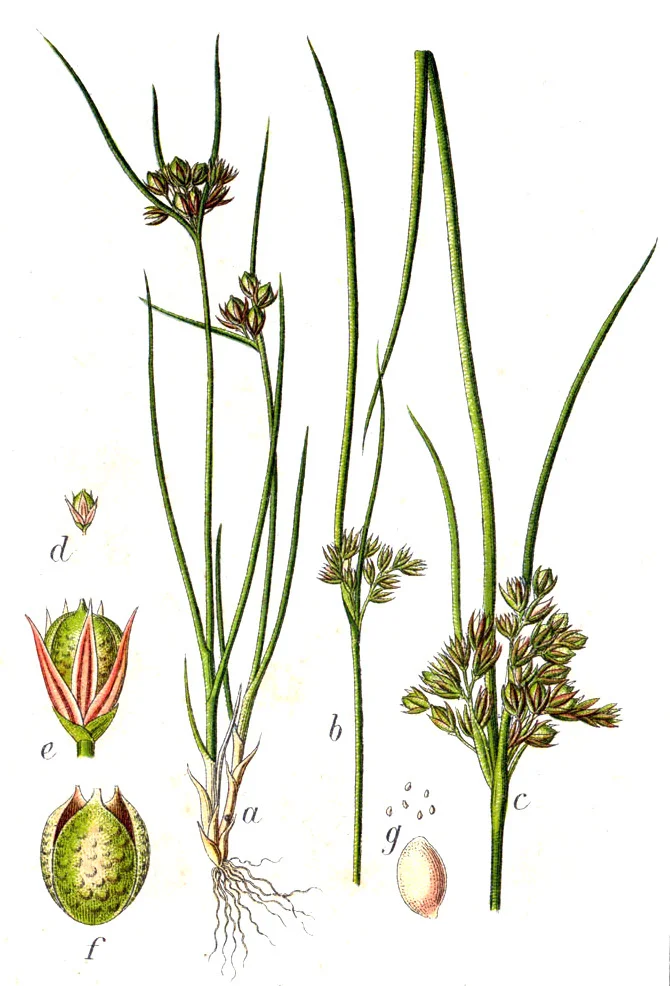Photo by Matt Lavin licensed by CC BY-SA 2.0
Path rush (Juncus tenuis) is one of those plants that has really benefited from human expansion. Originally native to North America, it can now be found in numerous countries around the globe. It owes much of its success to both its ability to tolerate lots of disturbance as well as an ingenious seed dispersal mechanism. If you like to hike, there is a good chance you have encountered path rush somewhere along the way. There is also a strong chance that you have dispersed its seeds.
Path rush is a relatively small species, topping out around 60 cm in height. Because it frequently grows where foot traffic is heavy, plants don’t always reach such stature. Like most rushes, it has round stems and surprisingly attractive flowers, though one would need a hand lens to fully appreciate their beauty. Flowering for path rush occurs during the summer and it is thought that wind is the main pollination mechanism for this species.
The darker vegetation running along the path is all path rush! Photo by Tom Potterfield licensed by CC BY-NC-SA 2.0
Following pollination, each flower is replaced by a tiny capsule filled with tiny seeds. Each seed is covered in a substance that turns into a sticky mucilage when wet. This mucilage is how path rush manages to move around the landscape so easily. The sticky seeds glom onto pretty much everything from fur to feathers, boots to car tires. This is why you most often find path rush on, well, paths! Its sticky seeds are carried far and wide by foot traffic. It is also why you can now find path rush growing well outside of North America.
Path rush enjoying a crack in the sidewalk.
Path rush frequents more habitats than simply paths too. The key to its success is soil disturbance. Anywhere the soil has been compacted and disturbed, path rush can find its niche. With little competition from surrounding vegetation, this tiny rush can grow into impressive colonies. Even cracks in asphalt can harbor a plant or two. Aside from its ability to tolerate soil disturbance, its tough, stringy foliage is not fed on by a lot of herbivores, which gives it yet another leg up on potential competitors. All in all, this is one tough little plant.
Photo Credits: [1] [2] [3] [4]



